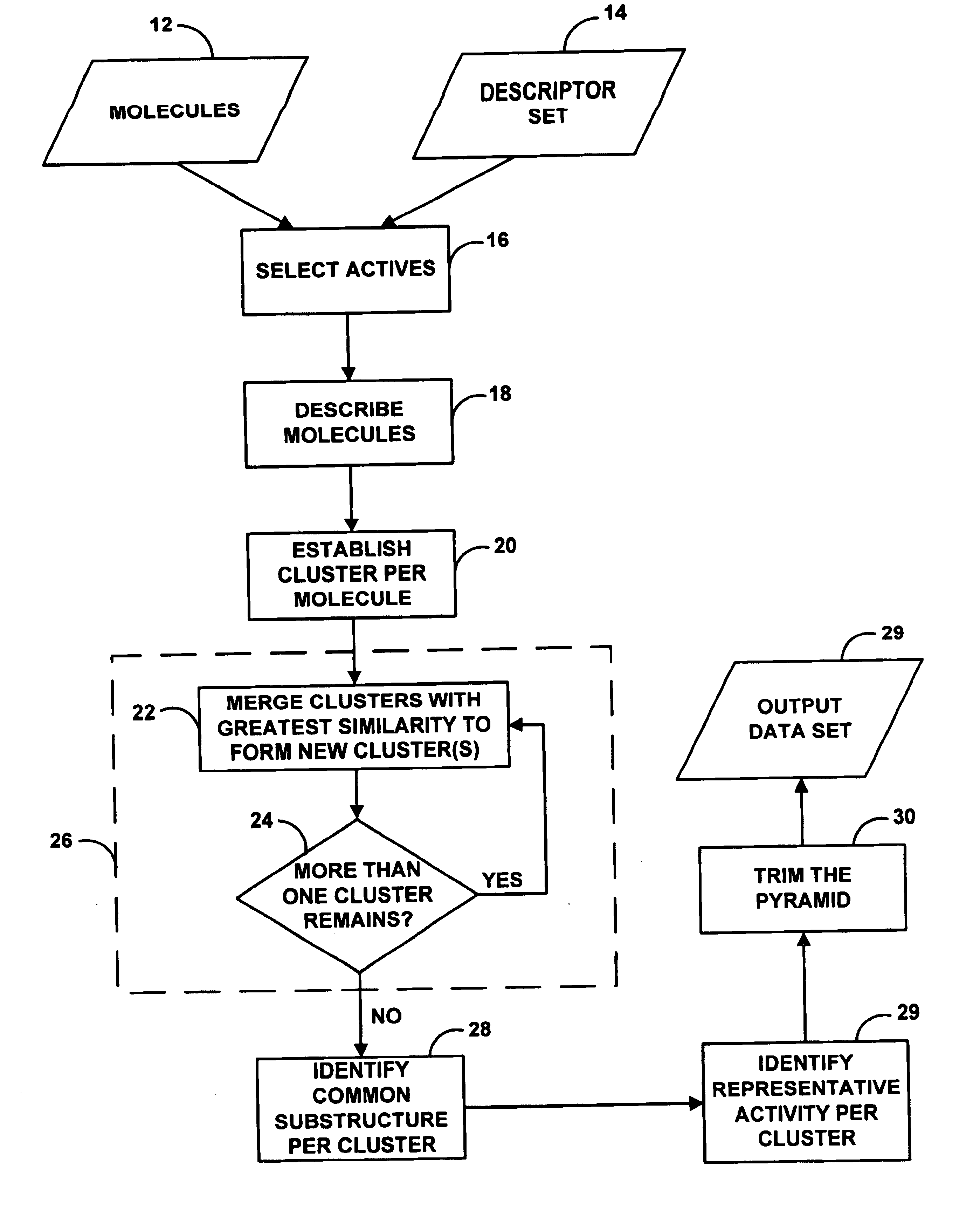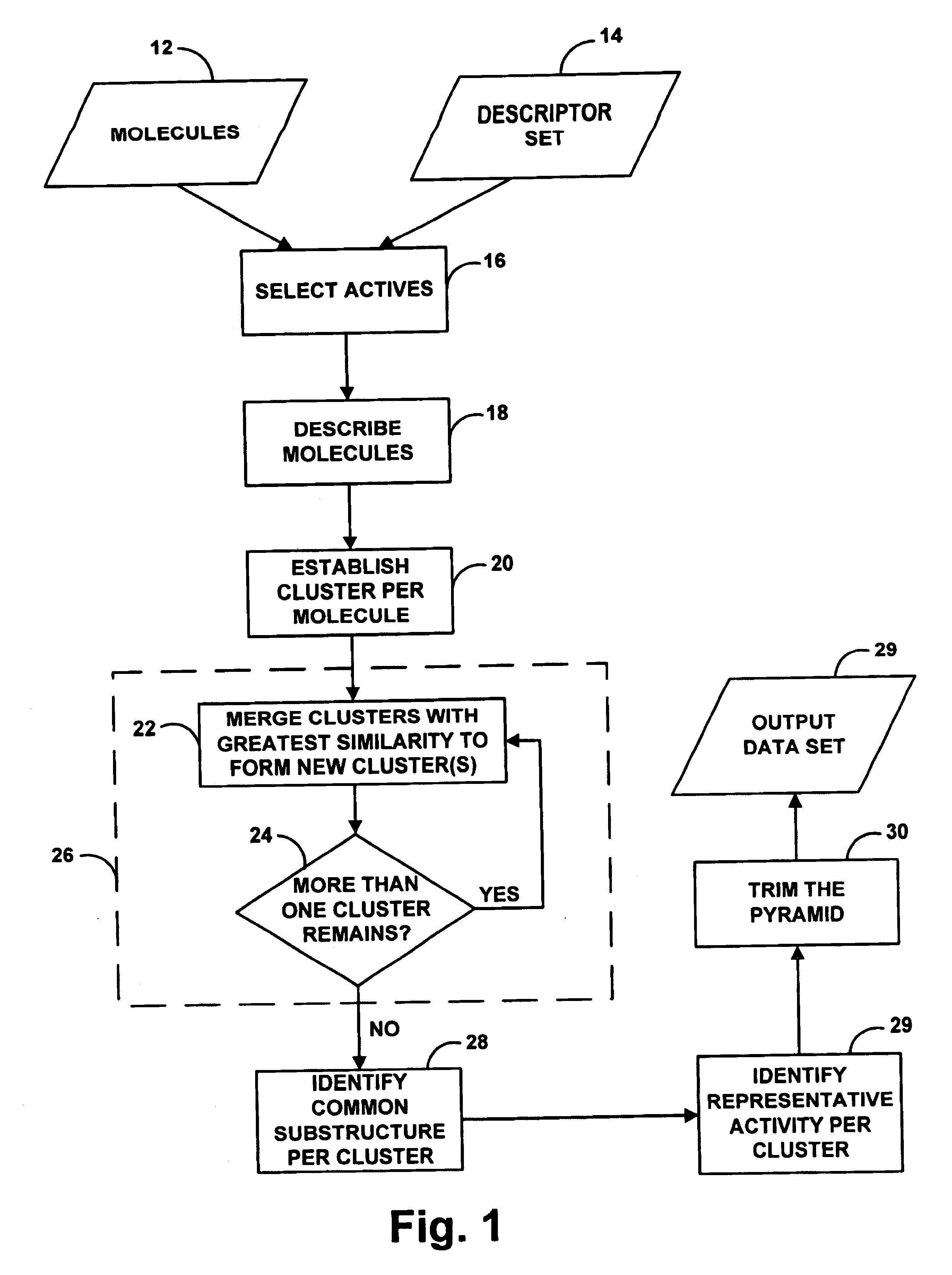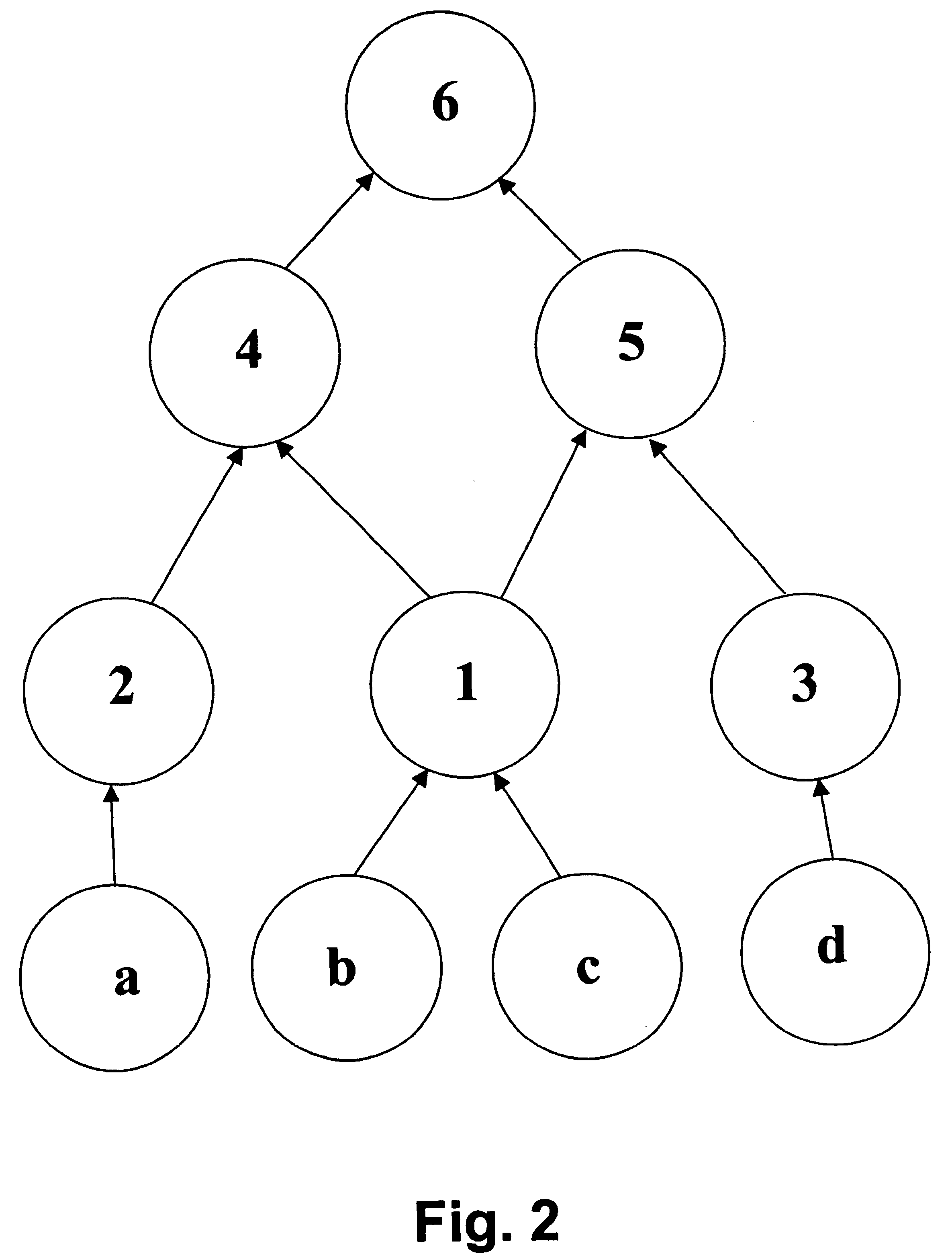Method and system for artificial intelligence directed lead discovery though multi-domain agglomerative clustering
a technology of artificial intelligence and clustering, applied in chemical machine learning, instruments, library screening, etc., can solve the problems of low drug discovery rate and long time-to-market, current r&d effort is characterized, and companies do not have the resources to develop an exhaustive understanding of each potential therapeutic targ
- Summary
- Abstract
- Description
- Claims
- Application Information
AI Technical Summary
Problems solved by technology
Method used
Image
Examples
Embodiment Construction
As indicated above, the present invention provides a computer-based system for the automated analysis of a data set. The system is configured to correlate features with responses and to thereby identify or discover scientifically useful subclasses of features or mechanism models, namely, features that are likely to correspond to observed or predicted responses.
An exemplary embodiment of the invention provides a computer-based system for generating structural subclasses that relate to pharmacophoric activity and thereby generating a pyramid structure that embodies rules or processes for creating (i.e., identifying or establishing) scientifically useful pharmacophoric mechanisms.
The functional steps described herein are preferably encoded in a set of machine language instructions (e.g., source code compiled into object code), which are stored in a computer memory or other storage medium (e.g., a computer disk or tape) and executed by a general purpose computer. (Alternatively, the fun...
PUM
 Login to View More
Login to View More Abstract
Description
Claims
Application Information
 Login to View More
Login to View More - R&D
- Intellectual Property
- Life Sciences
- Materials
- Tech Scout
- Unparalleled Data Quality
- Higher Quality Content
- 60% Fewer Hallucinations
Browse by: Latest US Patents, China's latest patents, Technical Efficacy Thesaurus, Application Domain, Technology Topic, Popular Technical Reports.
© 2025 PatSnap. All rights reserved.Legal|Privacy policy|Modern Slavery Act Transparency Statement|Sitemap|About US| Contact US: help@patsnap.com



